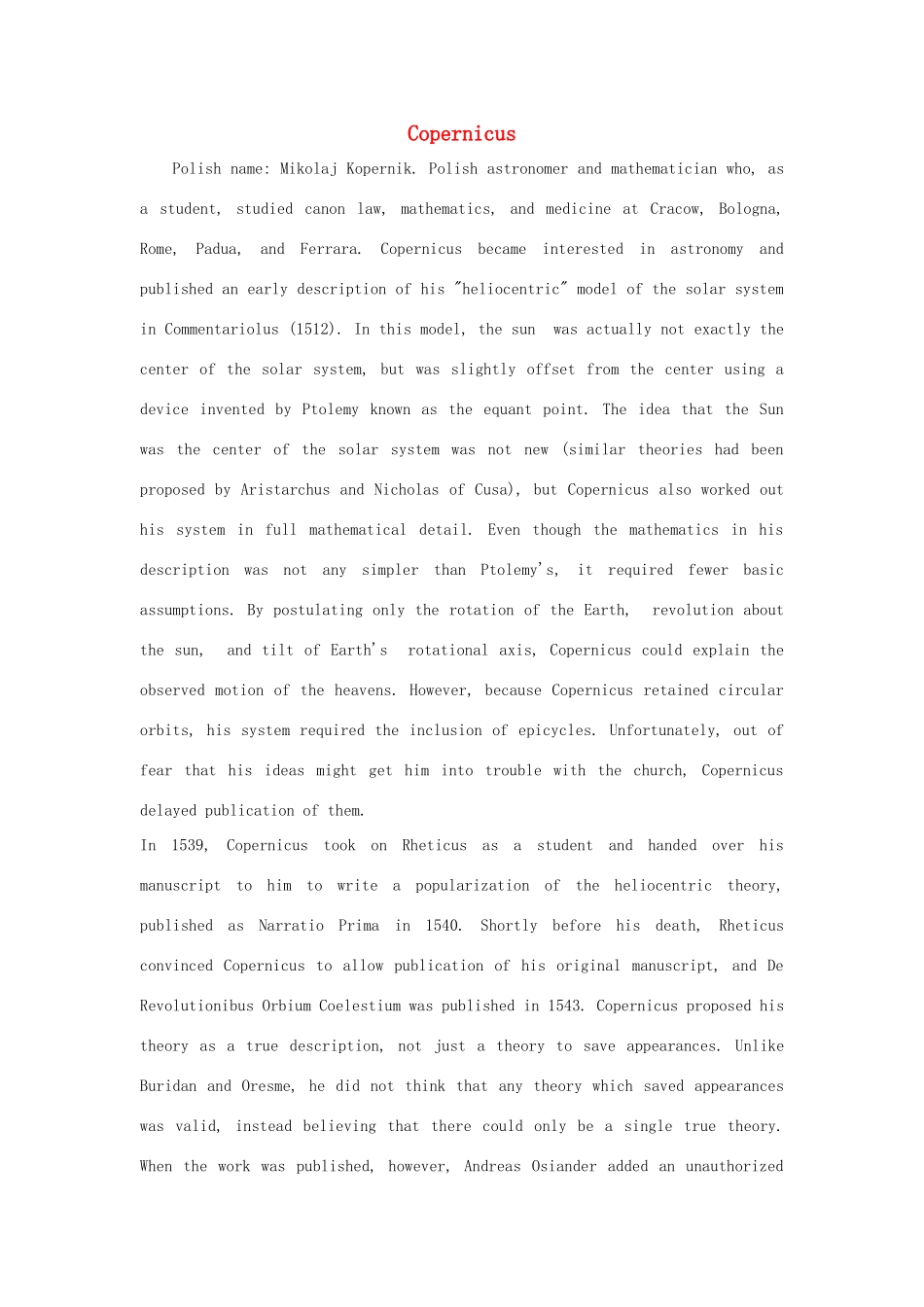CopernicusPolish name: Mikolaj Kopernik. Polish astronomer and mathematician who, as a student, studied canon law, mathematics, and medicine at Cracow, Bologna, Rome, Padua, and Ferrara. Copernicus became interested in astronomy and published an early description of his "heliocentric" model of the solar system in Commentariolus (1512). In this model, the sun was actually not exactly the center of the solar system, but was slightly offset from the center using a device invented by Ptolemy known as the equant point. The idea that the Sun was the center of the solar system was not new (similar theories had been proposed by Aristarchus and Nicholas of Cusa), but Copernicus also worked out his system in full mathematical detail. Even though the mathematics in his description was not any simpler than Ptolemy's, it required fewer basic assumptions. By postulating only the rotation of the Earth, revolution about the sun, and tilt of Earth's rotational axis, Copernicus could explain the observed motion of the heavens. However, because Copernicus retained circular orbits, his system required the inclusion of epicycles. Unfortunately, out of fear that his ideas might get him into trouble with the church, Copernicus delayed publication of them. In 1539, Copernicus took on Rheticus as a student and handed over his manuscript to him to write a popularization of the heliocentric theory, published as Narratio Prima in 1540. Shortly before his death, Rheticus convinced Copernicus to allow publication of his original manuscript, and De Revolutionibus Orbium Coelestium was published in 1543. Copernicus proposed his theory as a true description, not just a theory to save appearances. Unlike Buridan and Oresme, he did no...


